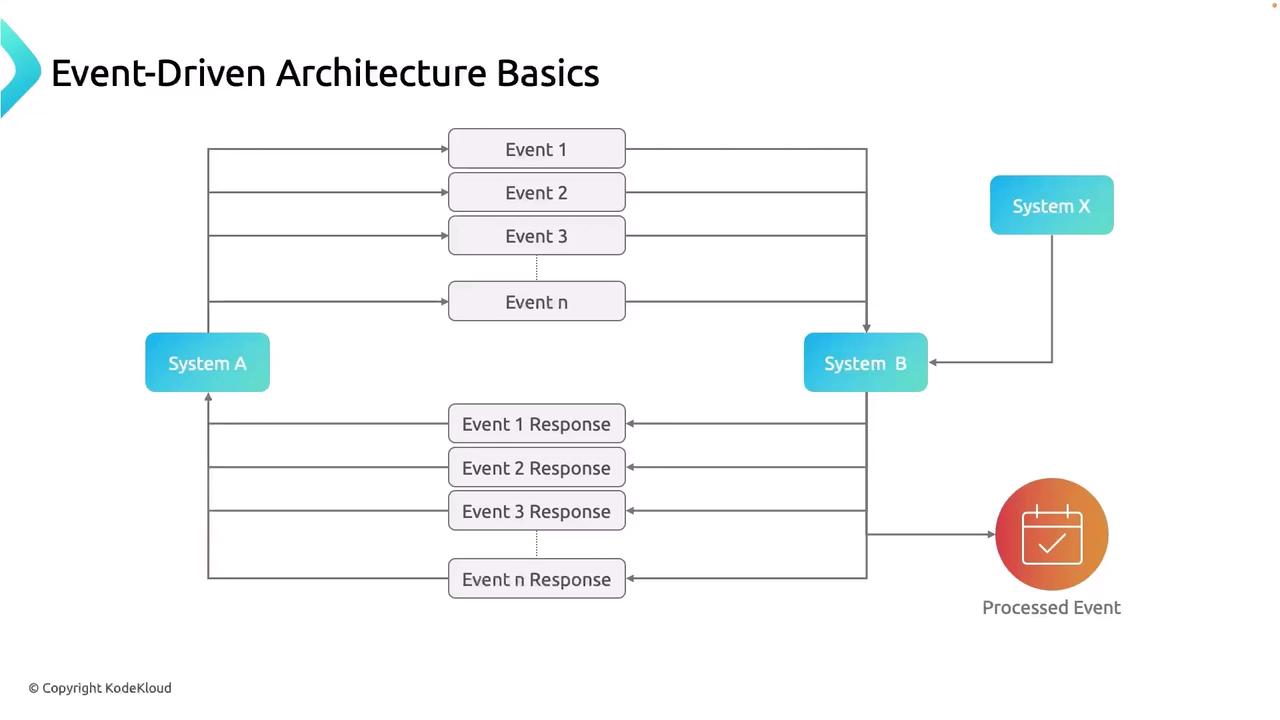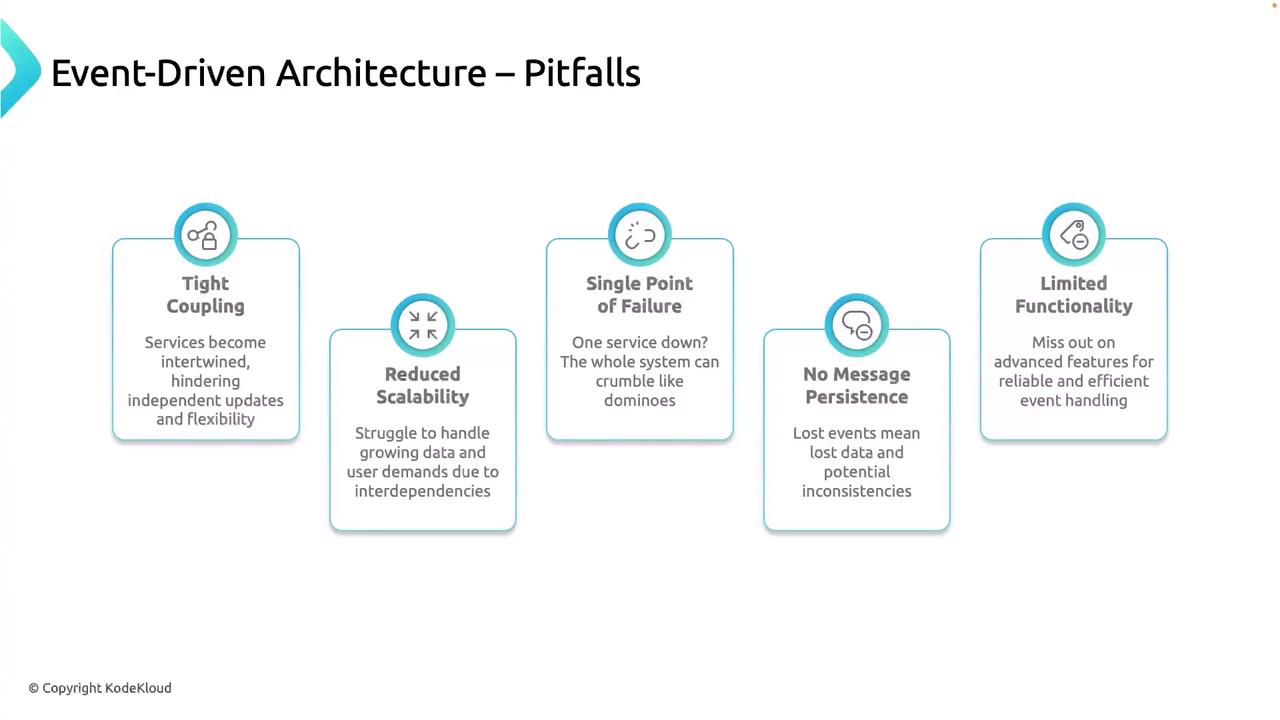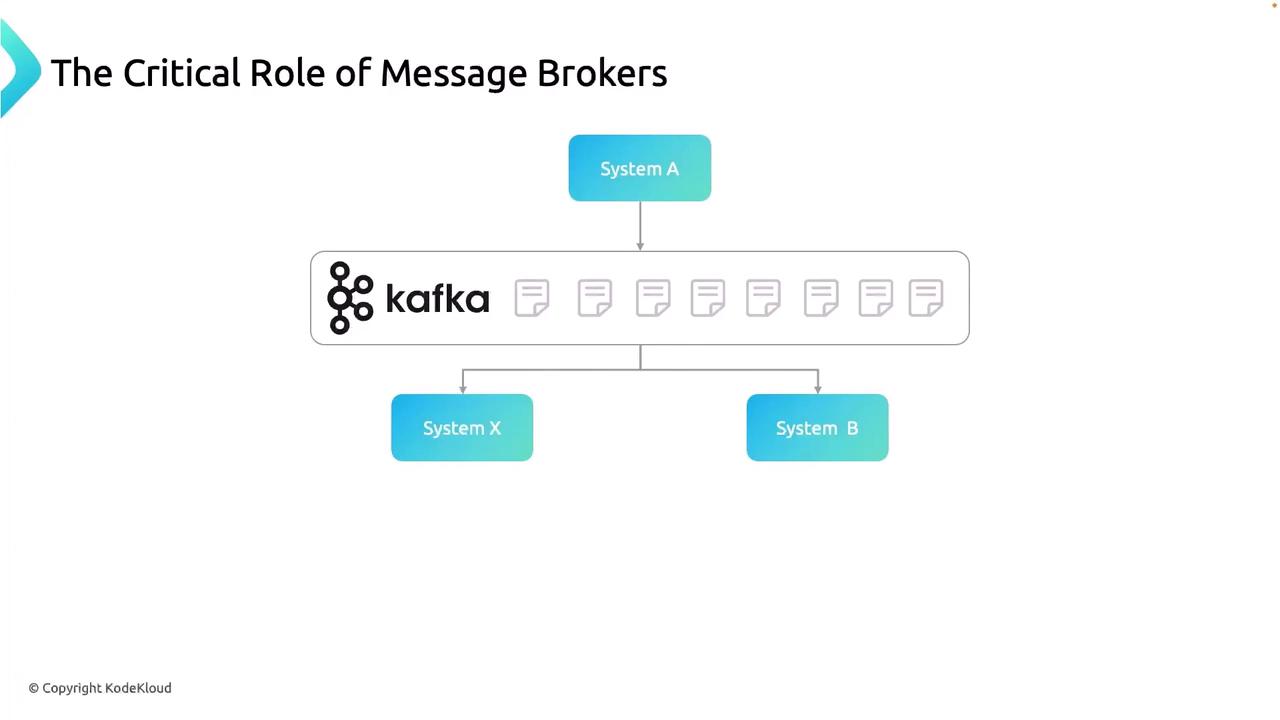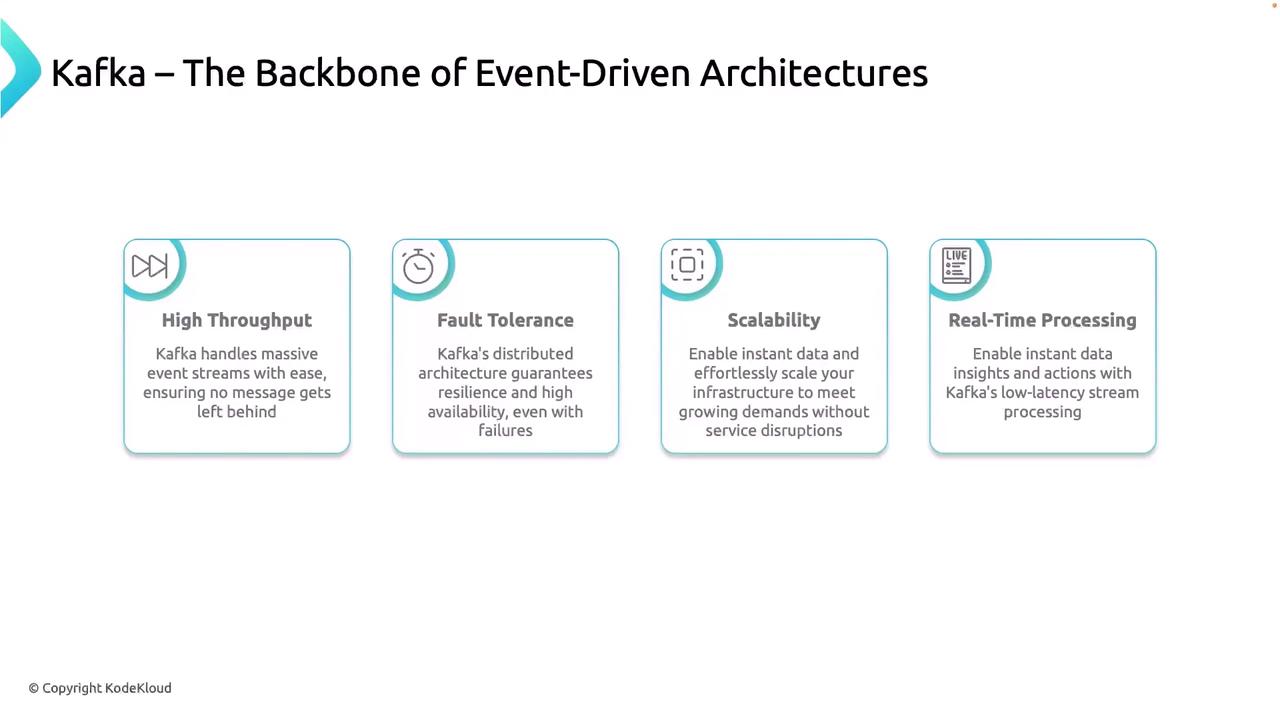Event Streaming with Kafka
Foundations of Event Streaming
Event Driven Architecture Basics
Hello and welcome back. In our previous lesson, we introduced Apache Kafka. Now, we’ll revisit the fundamentals of Event-Driven Architecture (EDA) to understand the challenges it solves and how Kafka addresses them.
Revisiting Event-Driven Architecture
System A (a microservice, IoT device, or any event source) emits an event. System B consumes this event, transforms or enriches the data, and then produces a “processed event.” Downstream consumers—System X, System Y, etc.—leverage these processed events for storage, analytics, or triggering additional workflows.
At high volume—hundreds or thousands of events per second—System B must process every message without dropping any and then reliably publish processed events. Optionally, acknowledgments or responses may flow back to System A or other services, completing a request–response cycle.
Managing this complexity at scale can lead to overload, failures, or data loss. Let’s examine the pitfalls of a naïve event-driven setup before diving into how Kafka mitigates them.

Warning
Without a central event broker, direct service-to-service communication can lead to cascading failures under load.
Common Pitfalls of Traditional EDA
| Pitfall | Impact | Real-World Example |
|---|---|---|
| Tight Coupling | Services share internal contracts, causing breaking changes when one service updates. | An e-commerce order service change breaks the payment service during a Black Friday surge. |
| Reduced Scalability | Dependencies prevent horizontal scaling, leading to performance bottlenecks under load. | Twitter faced massive latency when handling millions of tweets during the Super Bowl without decoupling. |
| Single Point of Failure | One component outage collapses the entire workflow. | If Netflix’s recommendation engine fails, users lose personalized suggestions—or streaming may be interrupted. |
| No Message Persistence | Events aren’t durably stored, risking data loss and inconsistency. | A trading platform that fails to persist trade events could incur regulatory penalties. |
| Limited Functionality | Lack of real-time analytics, exactly-once processing, or retry mechanisms. | FedEx’s tracking system without real-time updates or error recovery results in missed package alerts. |

Introducing Kafka as the Message Broker
Instead of sending events directly between services, System A publishes to Apache Kafka—the central event hub. Once the event is in Kafka:
- Producers are decoupled from consumers.
- Any number of consumers (System B, System X, or new services) can subscribe independently.
- Services don’t need to know about each other or the original source.
- Events can be replayed, audited, and retained for as long as needed.

Note
Using Kafka topics as the primary communication channel simplifies scaling, error handling, and system evolution.
Why Kafka Excels: Key Features
High Throughput
Handles millions of messages per second with low latency, making it ideal for real-time data pipelines.Fault Tolerance
Distributed architecture with replicated partitions ensures no single point of failure.Scalability
Add brokers or partitions on the fly to meet increasing demand without downtime.Real-Time Processing
Low-latency streaming enables immediate analytics, monitoring, and event-driven workflows.

Next Steps
In the next lesson, we’ll cover how to install, configure, and optimize Kafka for your event-driven applications.
Links and References
Watch Video
Watch video content